A Guide to Solar Rooftop Installations for Homeowners in India
- Aashirwad Solar
- Oct 16, 2024
- 5 min read
Updated: Oct 19, 2024
As the world shifts towards sustainable energy sources, India is making significant strides in adopting solar energy to power homes and businesses. Solar rooftop installations are becoming increasingly popular among homeowners due to their cost-effectiveness, environmental benefits, and government incentives. This comprehensive guide will walk you through everything you need to know about installing a solar rooftop system, its benefits, government promotions, and the subsidies offered to make solar energy more accessible.
What is a Solar Rooftop System?
A solar rooftop system is a photovoltaic (PV) setup installed on the roof of your home. The system converts sunlight into electricity using solar panels, which consist of photovoltaic cells that capture sunlight and convert it into usable power. Homeowners can use the generated electricity to power their household needs, reducing their dependence on grid electricity and saving on energy bills.
Types of Solar Rooftop Systems
There are two main types of solar rooftop systems:
On-Grid-Connected Systems: These systems connect directly to the main grid. Excess energy generated is sent to the grid, and homeowners earn credits through net metering. They rely on the grid during low solar production periods.
Off-Grid Systems: These systems are independent of the grid, using batteries to store excess energy for later use. Ideal for remote areas, they ensure power availability but require higher investment for battery storage.
Hybrid-Grid Systems: Hybrid systems combine on-grid and off-grid benefits, with both grid connection and battery storage. They store energy for backup during outages while still allowing surplus energy to be sent to the grid.
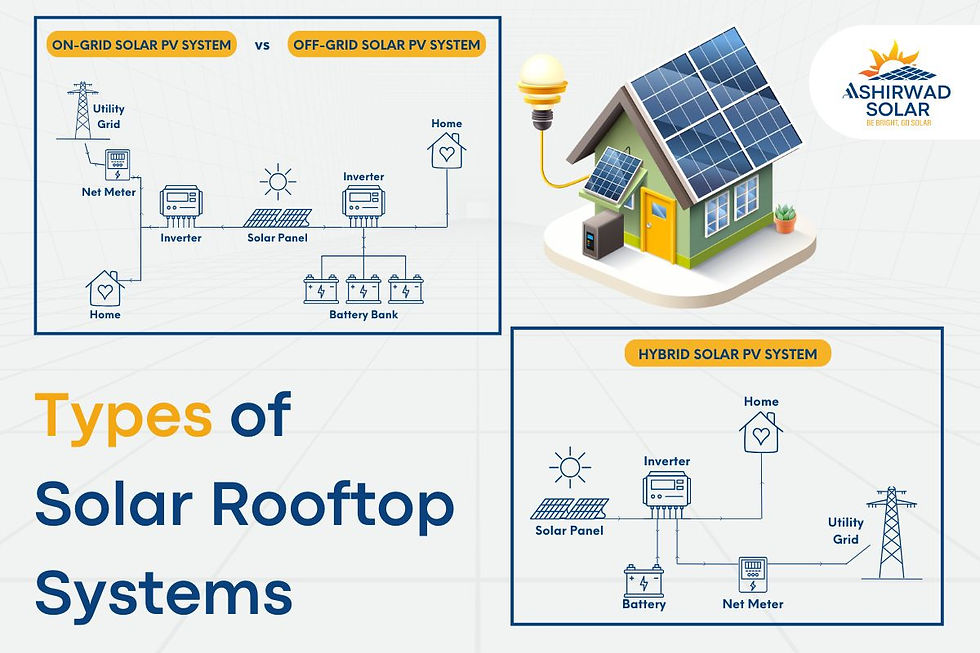
Why Should Homeowners Consider Solar Rooftop Installations?
1. Cost Savings: One of the biggest advantages of installing a solar rooftop system is the significant reduction in electricity bills. Solar energy is free once the initial investment in the system is made, and it can drastically reduce or even eliminate your electricity costs.
2. Environmental Benefits: Solar energy is a clean, renewable energy source. By installing a solar rooftop system, you reduce your reliance on fossil fuels, leading to lower carbon emissions and a reduced carbon footprint. This is particularly important as India works towards meeting its climate goals.
3. Energy Independence: With solar power, you can generate your electricity, reducing dependence on the electricity grid and providing energy security.
4. Government Subsidies: The Indian government provides financial incentives, such as subsidies and tax benefits, making solar rooftop installations more affordable.

How Does the Solar Rooftop System Work?
A solar rooftop system operates in three basic steps:
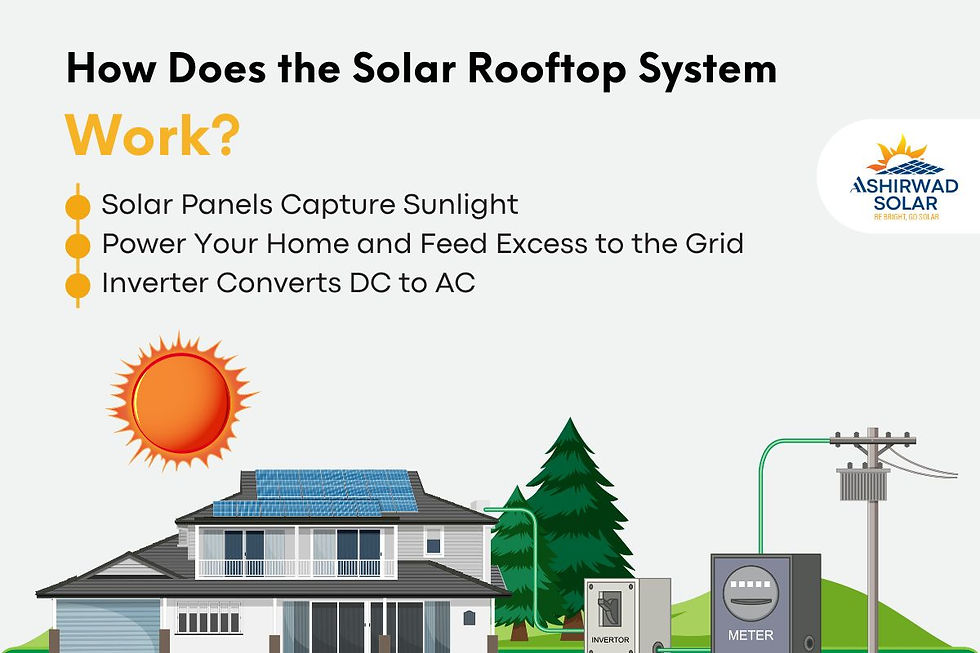
1. Solar Panels Capture Sunlight: Photovoltaic cells in the solar panels capture sunlight and convert it into direct current (DC) electricity.
2. Inverter Converts DC to AC: The inverter then converts the DC electricity into alternating current (AC) electricity, which is what powers your household appliances.
3. Power Your Home and Feed Excess to the Grid: The generated electricity powers your home, and any excess electricity can be sent back to the grid or stored in a battery (for off-grid systems).
Benefits of Solar Rooftop Systems for Homeowners
Cost Breakdown and Savings Potential
The cost of installing a solar rooftop system typically ranges from INR 40,000 to INR 60,000 per kW (after government subsidies). Here's how a 5 kW system can benefit homeowners:
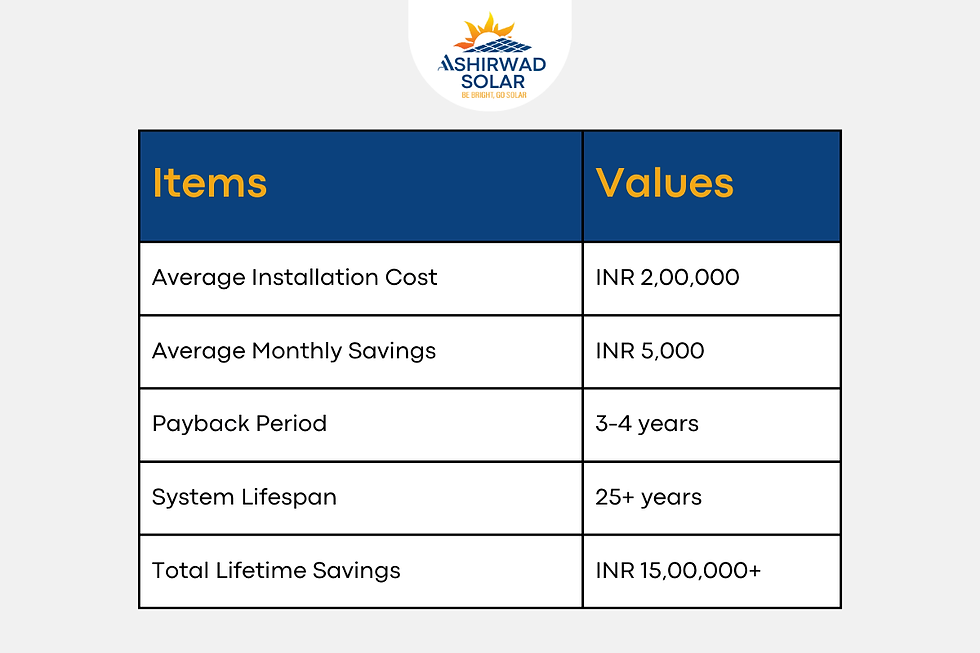
Environmental Impact: Installing a 5 kW solar rooftop system can reduce carbon emissions by approximately 6 tones annually, contributing to cleaner air and a more sustainable future.
Government Support: To accelerate the adoption of solar energy, the Indian government offers various subsidies and incentives for homeowners. Currently, the Ministry of New and Renewable Energy (MNRE) provides a subsidy of 30-40% of the benchmark installation cost depending on the location and system size.
Government Incentives and Promotion
The Indian government is actively promoting solar rooftop installations through various initiatives, primarily driven by the goal to achieve 175 GW of renewable energy capacity by 2022 and 500 GW by 2030. Here’s how the government is promoting solar energy:
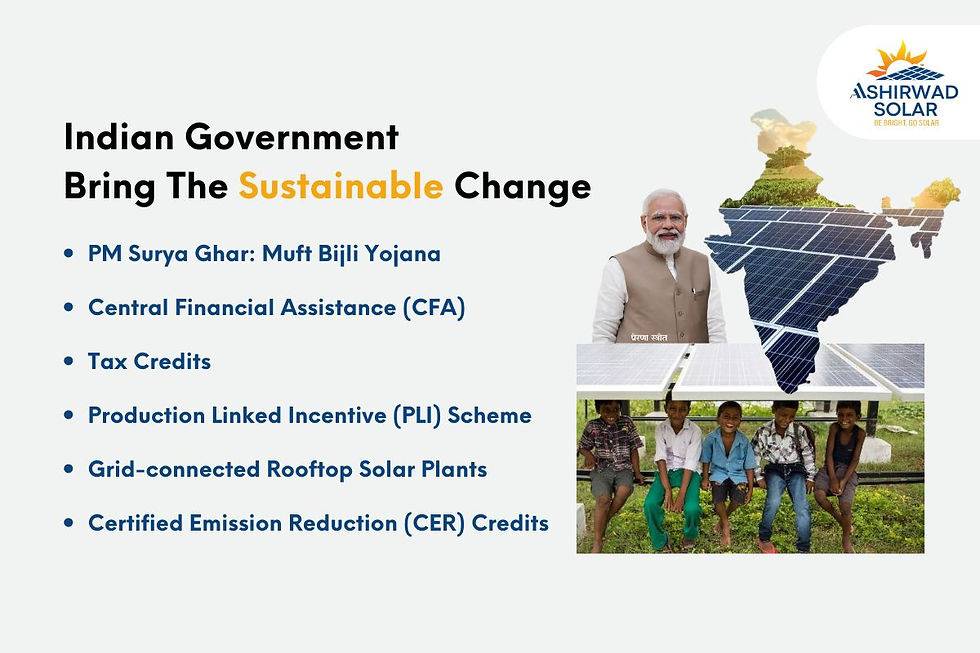
PM Surya Ghar: Muft Bijli Yojana: Up to 40% subsidy on rooftop solar panels for households, benefiting 1 crore homes and saving Rs. 75,000 crore annually in electricity costs.
Production Linked Incentive (PLI) Scheme: Provides incentives for solar PV module manufacturers to achieve Giga Watt (GW) scale capacity for high-efficiency solar modules.
Central Financial Assistance (CFA): Financial aid for preparing Detailed Project Reports (DPR) and meeting milestones in solar parks and mega solar projects.
Grid-connected Rooftop Solar Plants: 30% subsidy for installing grid-connected solar plants, with the opportunity to earn revenue through excess power generation.
Tax Credits: Owners of solar installations qualify for tax benefits.
Certified Emission Reduction (CER) Credits: Solar projects are eligible for CER credits, tradeable in emissions markets
Solar Subsidy Table for Homeowners
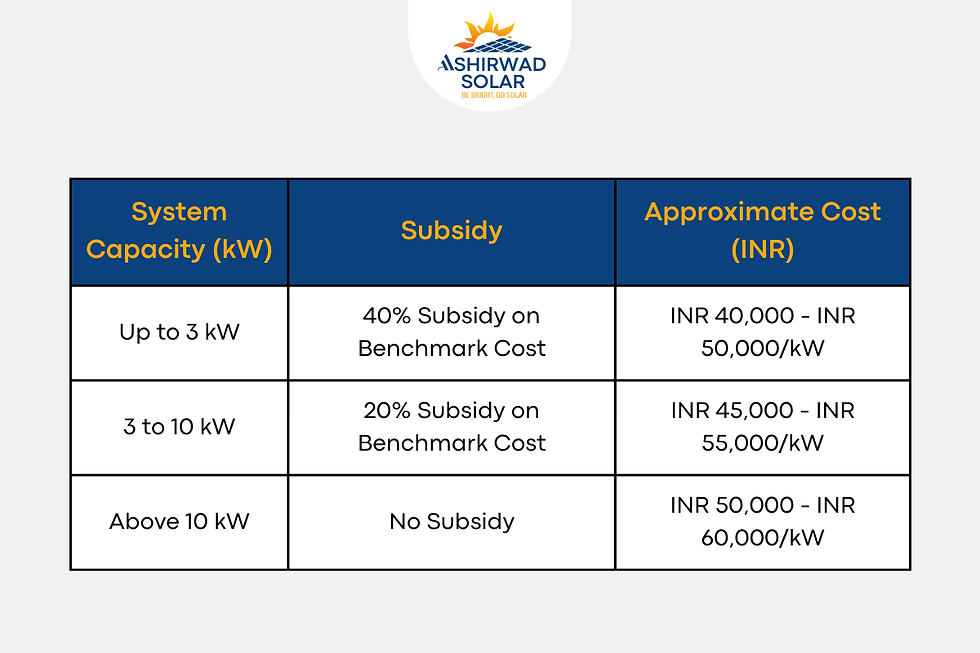
How to Install a Solar Rooftop System in India: Step-by-Step Guide

1. Site Assessment: Contact a certified solar installer to assess the rooftop's suitability for solar installation, including size, direction, and sunlight exposure.
2. Design & Quote: The installer will design a system based on your energy consumption and rooftop space. A detailed quote will be provided, including the cost, government subsidy, and expected savings.
3. Apply for Subsidy: If eligible, the installer will help you apply for the government subsidy.
4. Installation: Once the design is approved, the installation process begins. A 5 kW system typically takes 2-3 days to install.
5. Net Metering Connection: The installer will connect your system to the grid for net metering, allowing you to earn credits for any excess power generated.
6. Inspection & Approval: After installation, your system will be inspected and approved by the relevant authorities.
7. Start Saving: Once approved, your solar rooftop system will begin generating electricity, allowing you to save on your monthly electricity bills.
Energy Generation vs Cost Savings Over Time
Here is the chart depicting Energy Generation vs Cost Savings Over Time for a 5 kW solar rooftop system. The blue line represents the cumulative energy generation in kilowatt-hours (kWh), while the green line shows the cumulative cost savings in INR over 25 years.
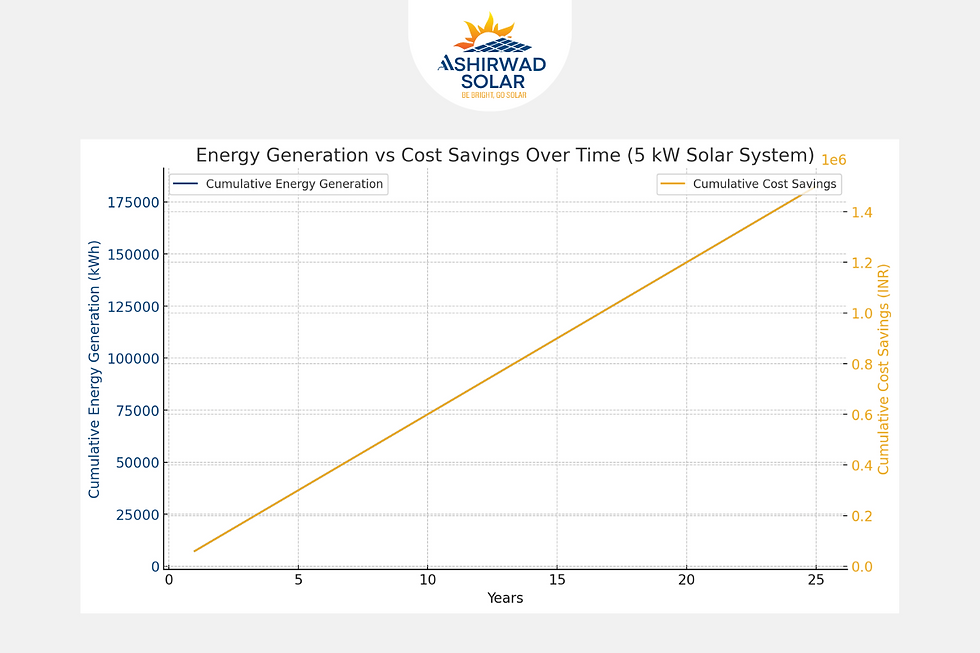
This visualization highlights how a solar system can steadily generate electricity and lead to significant financial savings over time, making it a worthwhile investment for homeowners.
Solar rooftop installations offer homeowners in India a unique opportunity to reduce their electricity costs, minimize their carbon footprint, and take advantage of government incentives. With the Indian government's focus on achieving ambitious renewable energy goals, now is the perfect time for homeowners to invest in solar energy. Not only will it provide long-term savings, but it will also contribute to a greener and more sustainable future for the country. Take the step towards energy independence today with a solar rooftop system and be a part of India's clean energy revolution.



Comments